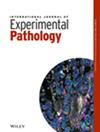Non-Interventional Treatment of Post-Dural-Puncture Headache; High-Flow Oxygen and Pro-Serotonin Agents a Safe and Effective Alternative
IF 2.2
4区 医学
Q3 PATHOLOGY
引用次数: 0
Abstract
Lumbar punctures are commonly performed for diagnostic and/or therapeutic purposes by threading a needle through the outermost layer of the meninges, the dura mater, and into the intrathecal space within the lumbar region of the spine [1]. The intrathecal space contains cerebrospinal fluid (CSF), a clear and colorless fluid, which surrounds the brain and spinal cord and can provide information regarding intracranial pressures, presence of diseases involving the central nervous system (CNS) or surrounding meninges [2-4]. A common complication of dural puncture is a postdural puncture headache (PDPH) which is defined by The International Headache Society as a “headache that develops within 5 days of dural puncture and resolves within 1 week spontaneously or within 48 hours after effective treatment of the spinal fluid leak” [5]. Symptoms of PDPH classically include a frontal and/or occipital headache that improves in the supine position, worsened by sitting or standing, and may be associated with nausea, nick stiffness, vertigo, vision changes, dizziness, or auditory disturbances [6]. PDPH has the propensity to cause significant morbidity; among affected patients, 39% report a duration of at least one week of significant impairment of daily activities while severe PDPH may require hospital admission [7]. The gold standard treatment for PDPH is to administer an epidural blood patch (EBP), autologous blood collected in the periphery vessels and delivered in the area of suspected CSF leak within the spinal canal to “mechanically plug the leak” [8]. However, in order to perform this intervention safely, training and specific equipment are necessary but unfortunately not a common part of the armamentarium of most clinical settings. Among cancer patients, access to the intrathecal space for diagnostic or therapeutic purposes may be part of the standard of care and occurrences of headaches associated with dural puncture in these scenarios are not totally unavoidable. Furthermore, many patients with cancer often have clear contraindications to accessing the epidural space to perform a therapeutic blood patch [9]. Under these circumstances, noninvasive alternatives should be considered (Table 1).硬膜穿刺后头痛的非介入治疗高流量氧和亲5 -羟色胺制剂是安全有效的替代品
腰椎穿刺术通常用于诊断和/或治疗目的,通过将针穿过脑膜的最外层,硬脑膜,进入腰椎区域的鞘内间隙[1]。鞘内间隙含有脑脊液(CSF),这是一种透明无色的液体,包裹着大脑和脊髓,可以提供颅内压、累及中枢神经系统(CNS)或周围脑膜疾病的信息[2-4]。硬脊膜穿刺的常见并发症是硬脊膜穿刺后头痛(postural穿刺头痛,PDPH),国际头痛学会将其定义为“硬脊膜穿刺后5天内出现头痛,1周内自发消退或脊髓液漏有效治疗后48小时内消退”[5]。PDPH的典型症状包括额部和/或枕部头痛,仰卧位时改善,坐位或站立时加重,并可能伴有恶心、划痕僵硬、眩晕、视力改变、头晕或听觉障碍[6]。PDPH有引起显著发病率的倾向;在受影响的患者中,39%报告持续至少一周的日常活动严重受损,而严重的PDPH可能需要住院[7]。PDPH的金标准治疗方法是硬膜外血贴(EBP),从周围血管中收集自体血液,并将其输送到椎管内疑似脑脊液泄漏的区域,以“机械堵塞泄漏”[8]。然而,为了安全地进行这种干预,培训和特定的设备是必要的,但不幸的是,大多数临床设置的设备中并不常见。在癌症患者中,为诊断或治疗目的进入鞘内空间可能是标准护理的一部分,在这些情况下,硬脑膜穿刺相关头痛的发生并非完全不可避免。此外,许多癌症患者通常对进入硬膜外腔进行治疗性血液贴片有明确的禁忌症[9]。在这种情况下,应考虑非侵入性替代方案(表1)。
本文章由计算机程序翻译,如有差异,请以英文原文为准。
求助全文
约1分钟内获得全文
求助全文
来源期刊
CiteScore
4.50
自引率
3.30%
发文量
35
审稿时长
>12 weeks
期刊介绍:
Experimental Pathology encompasses the use of multidisciplinary scientific techniques to investigate the pathogenesis and progression of pathologic processes. The International Journal of Experimental Pathology - IJEP - publishes papers which afford new and imaginative insights into the basic mechanisms underlying human disease, including in vitro work, animal models, and clinical research.
Aiming to report on work that addresses the common theme of mechanism at a cellular and molecular level, IJEP publishes both original experimental investigations and review articles. Recent themes for review series have covered topics as diverse as "Viruses and Cancer", "Granulomatous Diseases", "Stem cells" and "Cardiovascular Pathology".

 求助内容:
求助内容: 应助结果提醒方式:
应助结果提醒方式:


